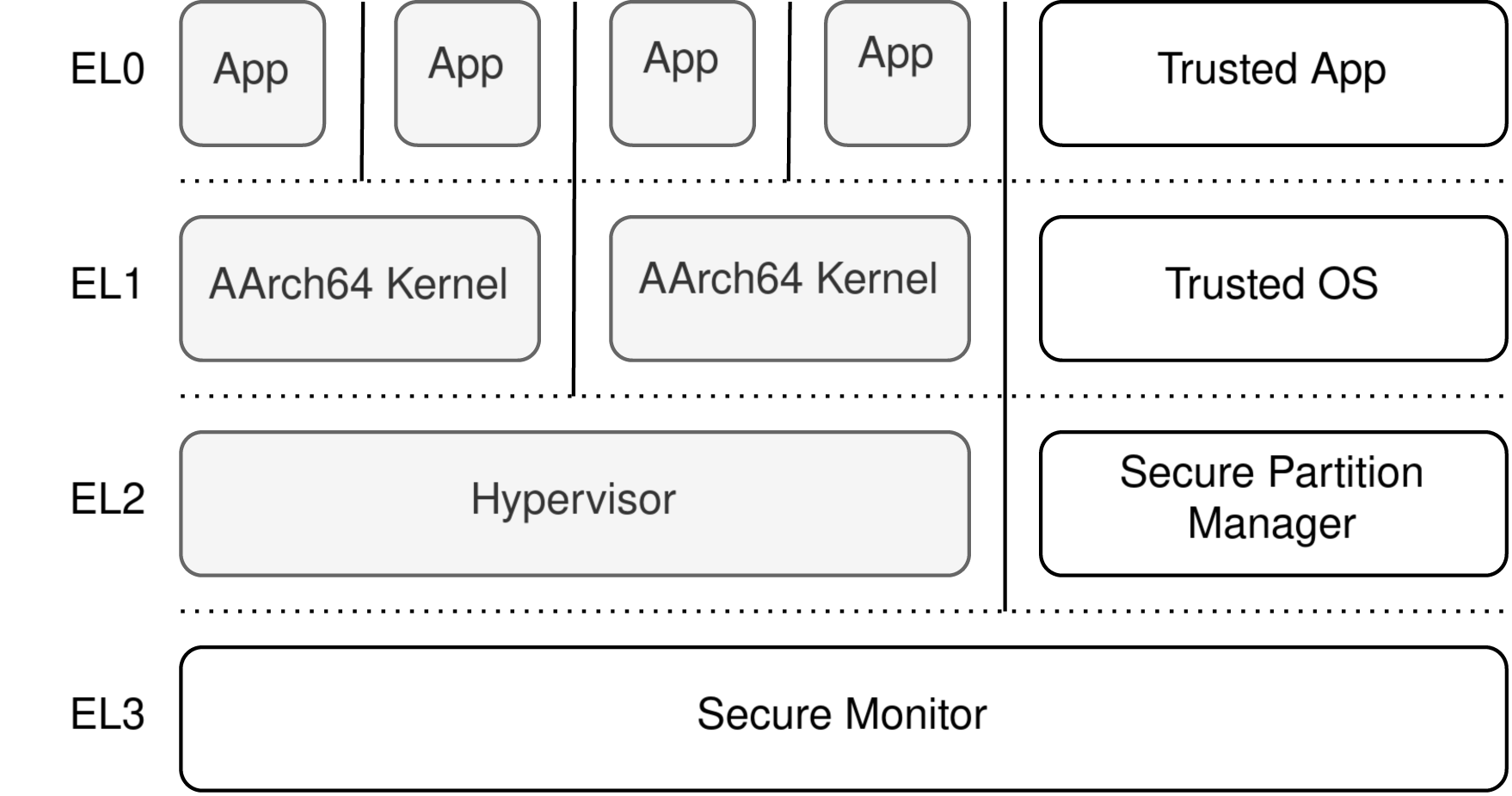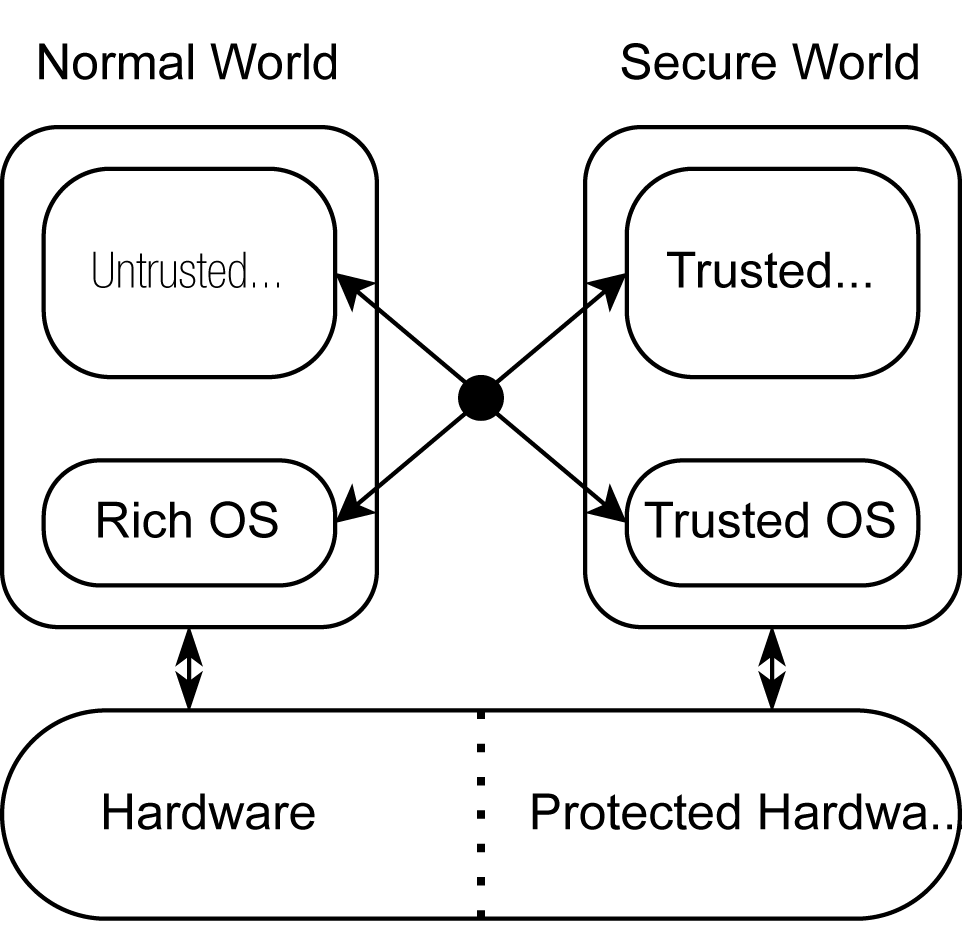
Author: Tymoteusz Burak, Junior Embedded Systems Developer at 3mdeb
In the realm of digital security, Trusted Platform Modules (TPMs) play a pivotal role by safeguarding cryptographic keys and other sensitive data used in authentication processes. Traditionally, TPMs are external hardware components, adding a layer of physical security but also increasing the overall cost of device manufacturing. However, in the quest to balance cost-effectiveness with security, one viable solution that emerges is the integration of firmware-based TPMs (fTPMs) within the CPU itself. This approach presents an innovative alternative for scenarios where traditional hardware TPMs may not be feasible or cost-effective but also come with fallbacks. The essence of fTPM, securing cryptographic keys and facilitating secure authentication processes, can be achieved in firmware alone, where it’s executed in a protected execution environment called a trusted execution environment (TEE), that separates it from the rest of the code running on the CPU.
Arm TrustZone
For Arm Cortex-A, there exists the Arm TrustZone technology. When used on an embedded device it creates two distinct memory “worlds”: a Normal World for the Operating System (referred to as Rich OS in documentation) and a Secure World, perfect for implementing the Trusted Execution Environment (Figure 1). The transition between these worlds is managed by the Secure Monitor, operating at a higher exception level (EL3), ensuring secure memory regions are exclusively accessible from the Secure World (Figure 2). This mechanism supports running fTPM in the Secure World, enabling secure syscalls from user space. Secrets stored in fTPM are secure as long as the Secure Monitor is not compromised.


Arm TrustZone also exists for the Cortex-M series but adopts a simpler and more hardware-focused approach relying on hardware mechanisms to manage the CPU state via interrupts (Figure 3).
fTPM requires a non-trivial amount of computational resources and memory, which might be scarce in the environments where Cortex-M processors are typically used. Implementing fTPM could therefore be impractical due to the limited resources available on these devices. It’s also rare for the Cortex-M devices demand the complex security functionalities that fTPM provides.

Fallbacks and Security Concerns
The best-protected systems have dedicated hardware security measures included from the beginning of their design process, starting with the specification for the processor core and the SoC infrastructure.
As fTPM is implemented purely in software the huge advantage is that it can be added to already provisioned devices via an update. The caveat is that while this can improve the security of such devices there are hardware security concerns that the device should fulfill from the beginning.
OP-TEE (Open Portable Trusted Execution Environment) is an open-source project that provides a TEE designed for Arm architectures that utilizes Arm TrustZone. Its official documentation specifies the Raspberry Pi 3 platform as not suitable for a secure implementation of Trusted Execution Environment. A sole CPU can’t provide features such as a good source of entropy, a secure counter or a secure clock. Thus fTPM, while being a great hardening option, comes with a set of weaknesses. These drawbacks can be mitigated but the device manufacturers need to seriously take into account potential vulnerabilities in the early stages of designing an embedded device.
Additionally while the firmware-based TPM (fTPM) offers a software-centric approach to trusted computing, developed and reference-implemented by Microsoft, integrating it across diverse platforms and Trusted Execution Environments (TEEs) presents significant developmental challenges. This fragmentation hinders the widespread adoption of fTPMs, particularly in the IoT sector, where device heterogeneity is the norm.
CROSSCON’s mission is to engineer a new, open, modular, highly portable, and vendor-neutral IoT security stack. By doing so, we aim to dismantle the barriers currently complicating the deployment of fTPMs and other trusted applications on varied devices and architectures. The project’s strategy involves the development of a unified API set that abstracts the complexities of TEE functionalities and trusted services. This approach promises to simplify the development process, enabling seamless and secure integration of trusted applications across different IoT platforms. Ultimately, CROSSCON sets a new benchmark for creating secure IoT environments, demonstrating a clear path towards standardizing and fortifying IoT security at scale.
Summary
In the CROSSCON project, the exploration and integration of fTPMs stands as a strategic approach to fortify IoT security in scenarios where traditional TPMs are impractical or infeasible, particularly in the context of already deployed devices. This underlines our commitment to pushing the boundaries of security standards, offering a versatile and cost-effective alternative to enhance cryptographic operations and authentication processes on devices that were previously considered vulnerable or less secure. By designing a unified set of APIs to utilize Trusted Execution Environment functionalities and trusted services, the CROSSCON project can significantly simplify the development and provisioning of fTPMs, facilitating seamless integration across diverse IoT platforms and setting a new benchmark for secure IoT ecosystems.
While traditional hardware TPMs offer robust physical security, fTPMs provide a promising avenue for enhancing security in a variety of devices, from high-end computing systems to more constrained embedded devices and demonstrate a huge potential to close the security gap in a broad spectrum of IoT applications.
However, the transition to fTPMs is not without its challenges, as this approach necessitates a careful evaluation of the underlying hardware’s capacity to support secure Operations.
For more information about implementing the fTPM in practice please refer to the fTPM: A Software-only Implementation of a TPM Chip. This topic is also expanded at the Securing Embedded Systems with fTPM implemented as Trusted Application in TEE talk that was presented at FOSDEM 2024 along with a small PoC.